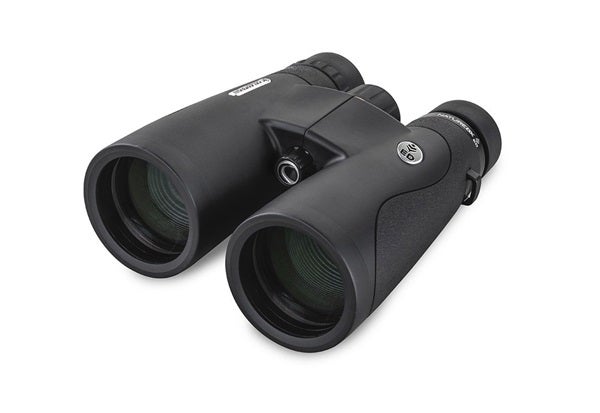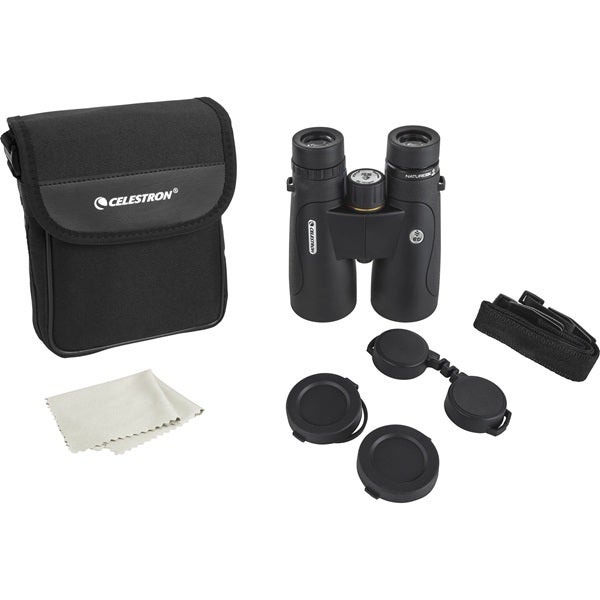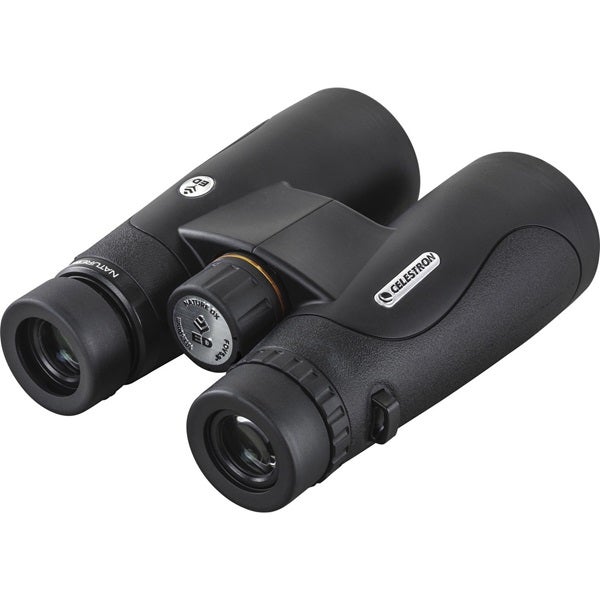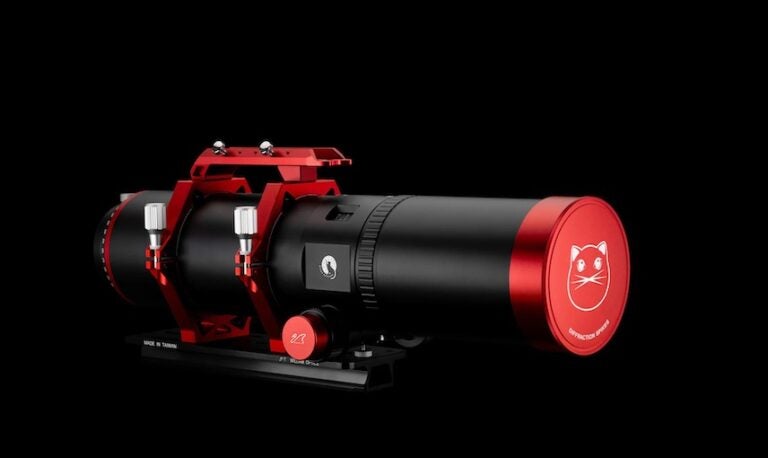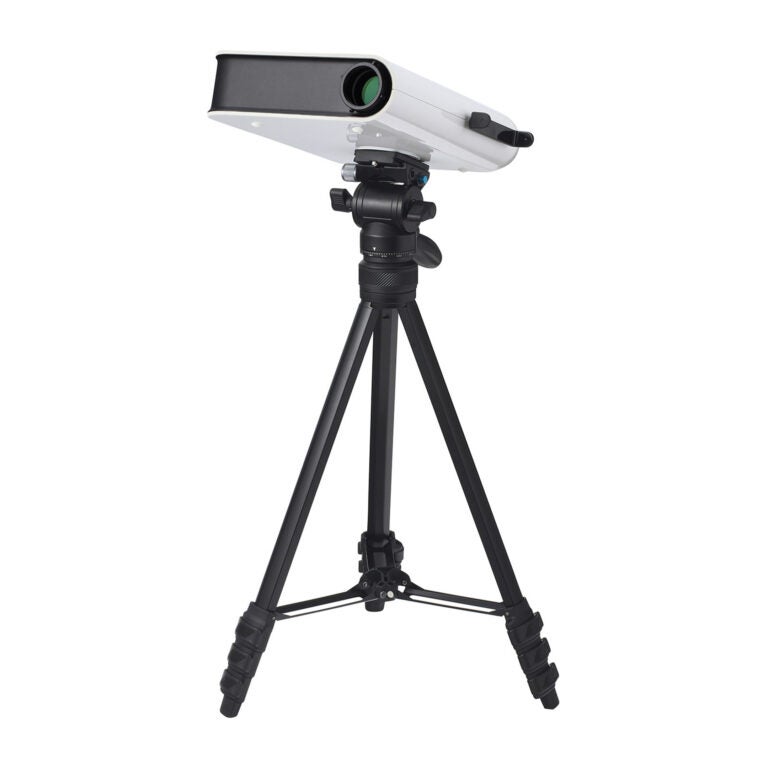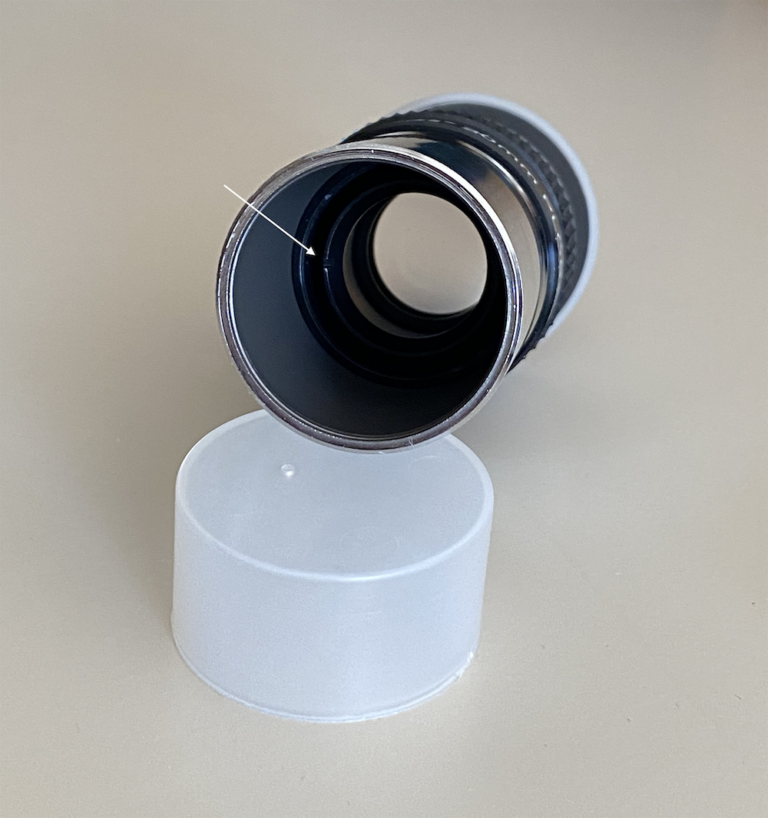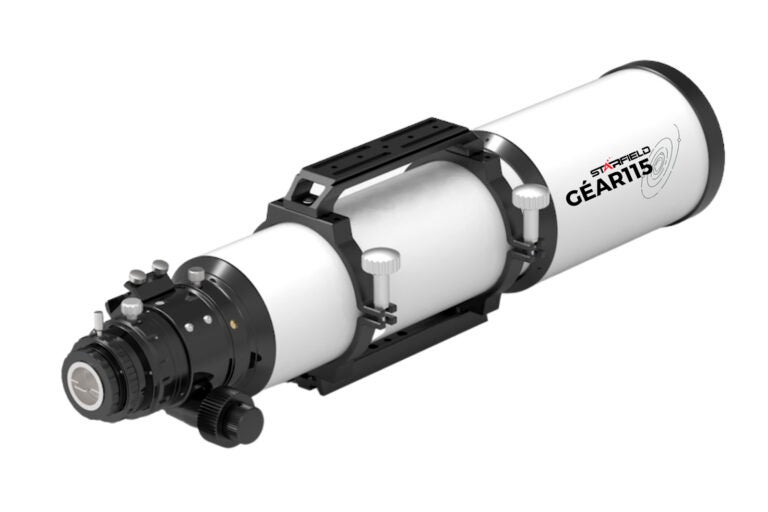Whether you’re a novice stargazer or a veteran observer, every amateur astronomer should own binoculars. They’re the perfect grab-and-go instrument for an impromptu viewing session, especially when you’re tight on time. The aesthetic element of viewing with both eyes rather than only one through a conventional telescope is another selling point: It’s more relaxing and feels more natural to use binoculars. As I often say, “two eyes are better than one.”
Binoculars come in many sizes and designs. The best compromise for most stargazers is a 10×50 unit. Binoculars with a magnification of 10x can be hand-held without too much involuntary hand shaking being transmitted to the view. And 50-millimeter lenses gather enough light to reveal good detail on the Moon, the rings of Saturn, and many deep-sky objects invisible to the unaided eye.
Binoculars use one of two internal prism designs — roof prisms or Porro prisms — to make sure that images exiting the eyepieces are right-side up, not flipped like in astronomical telescopes. Porro-prism binoculars have zigzagged barrels, while those with roof prisms have sleek, straight barrels.
Features
Recently, I toured the universe using Celestron’s Nature DX ED 10×50 Binoculars. Celestron’s line of Nature binoculars includes 10 roof-prism models ranging from 8×32 to 12×56. All have fully multicoated optics and phase-coated Schmidt-Pechan roof prisms made of BaK-4 glass, both highly desirable in roof-prism binoculars. Such features are usually limited to models costing twice as much (or more) than the Nature DX ED.
Phase coatings correct for light loss inherent in the roof-prism design. As an image passes through a roof-prism assembly, polarization splits its light cone into two perpendicular paths; by the time they exit the prisms, the horizontal plane is slightly out of phase with the vertical plane. The net result is some dimming of the image and a loss of contrast. Celestron resolved this “phase error” by applying a special dielectric coating to the prism surface to produce bright views with sharp contrast.
Two of the biggest ergonomic benefits of roof-prism binoculars are their compact size, and their lighter weight compared to similar Porro-prism models. For instance, my own 10×50 Porro-prism binoculars weigh 32 ounces (907 grams), while the DX ED 10x50s are only 28.4 ounces (806 g). Part of the credit goes to the choice of materials. Celestron made the ED’s housings out of polycarbonate, which is known for its strength, light weight, and low cost.
The barrels have a rubber finish that makes holding them sure and comfortable. The flat black color prevents reflections from nearby light sources when raising the binoculars to your eyes. Two textured, slightly depressed areas guide your hands to the proper position.
The Nature DX ED comes with lens caps tethered to the barrel so they can’t be lost. You also can tether the dual eyepiece cap to the neck strap.
To work properly, the span between the eyepieces — called the interpupillary distance — must match the distance between the observer’s eyes. For the average adult, that’s between 2.3 and 2.8 inches (58 and 71 mm). I measured the adjustment range of the Nature DX ED 10x50s to be between 2.2 and 2.9 inches (56 and 74 mm).
Rubberized twist-up eye cups with click stops help make centering each eye easier. The eye cups extend 0.35 inch (8.9 mm) when twisted all the way out. I found them great for observing, and the generous 17.8 mm of eye relief also added to viewing comfort. This is important if you must wear eyeglasses to correct for astigmatism. I normally remove my glasses, but I found seeing the full 5.9° field of view was easy even with them on.
The focusing knob works smoothly with just the right amount of resistance to prevent it from being turned by mistake. The fine-thread mechanism takes almost two full turns of the knob to bring the focus from one extreme to the other. As with most binoculars, the right eyepiece can be focused +/- 3 diopters for people whose eyes aren’t identical.
Although binoculars are great for grab-and-go viewing, I prefer securing mine to a tripod when using a star chart to find unfamiliar targets. The Nature DX EDs include a built-in tripod mount in the front of the central hinge between the barrels. The barrels are quite close to one another, however, so some L-shaped tripod brackets may not fit. Celestron’s model No. 93524 binocular tripod adapter L-bracket does work.
Testing
I always test binoculars on daytime and nighttime benchmarks. I check for misalignment, field curvature, and distortion by day. Field curvature occurs when the light passing through the edge of the objectives doesn’t focus in the same plane as that passing through the lens’ center, making one zone out of focus. Distortion bends objects geometrically, changing straight lines into arcs at the edge of the field of view. Both are best checked by aiming at a distant pole, a brick wall, or other horizontal or vertical references.
I quickly became impressed with the Nature DX ED’s performance. Both barrels were aligned. Field curvature was marginally detectable at the extreme edge of the field, while distortion proved negligible. These results are noteworthy at this price point. I have seen greater evidence of both aberrations through binoculars costing twice as much.
I waited for a clear night to check for other potential imperfections, such as astigmatism, coma, and chromatic aberration. Astigmatism elongates images on either side of focus. On one side, images will stretch horizontally, while on the other, the elongation will flip 90°, extending them vertically. Coma causes stars near the edge of the field to warp into tiny blobs resembling comets, while stars at the center appear sharp. Chromatic aberration is unwanted color fringes, typically purple and yellow, around brighter objects such as the Moon, Venus, Jupiter, and bright stars.
I checked the binoculars against some favorite test targets. Sure enough, the high marks scored during daytime testing continued into the night. None of those optical anomalies spoiled my viewing experience. Stars focused uniformly and remained sharp to nearly the edge of the field. Even as I swung the binoculars toward the unforgiving waning crescent Moon and brilliant Sirius early one morning, I saw no evidence of color fringing caused by chromatic aberration. Those ED lens elements sure paid off.
With my testing done, I sat back and simply enjoyed the sky. Many old favorites, such as the Double Cluster, the Pleiades, the Orion Nebula, and the Andromeda Galaxy put on fine displays. The sharp focus even let me detect the color difference in Albireo (Beta [β] Cygni), which I consider a challenge for this magnification and aperture.
Bringing the binoculars back inside my air-conditioned home from the damp nighttime air, I saw no evidence of internal moisture or fogging. That’s thanks to the nitrogen-filled barrels, which prevent the growth of fungus on optics that you’ll often see with old binoculars.
The bottom line
In summary, I give the Nature DX ED 10×50 binoculars high marks indeed. This unit combines an attractive price with many desirable features normally reserved for more expensive binoculars.
Product Information
Celestron Nature DX ED 10×50 Binoculars
Front lenses: 1.97 inches (50 mm)
Magnification: 10x
Eye relief: 17.8 mm
Interpupillary distance: 2.2 to 2.91 inches (56 to 74 mm)
Field of view: 5.9°
Dimensions: 6.4 by 5.3 by 2.4 inches (163 by 135 by 61 mm)
Included: Case, lens caps, neck strap
Weight: 28.4 ounces (806 g)
Price: $209.95
Contact: Celestron
2835 Columbia St.
Torrance, CA 90503
310.328.9560
www.celestron.com

